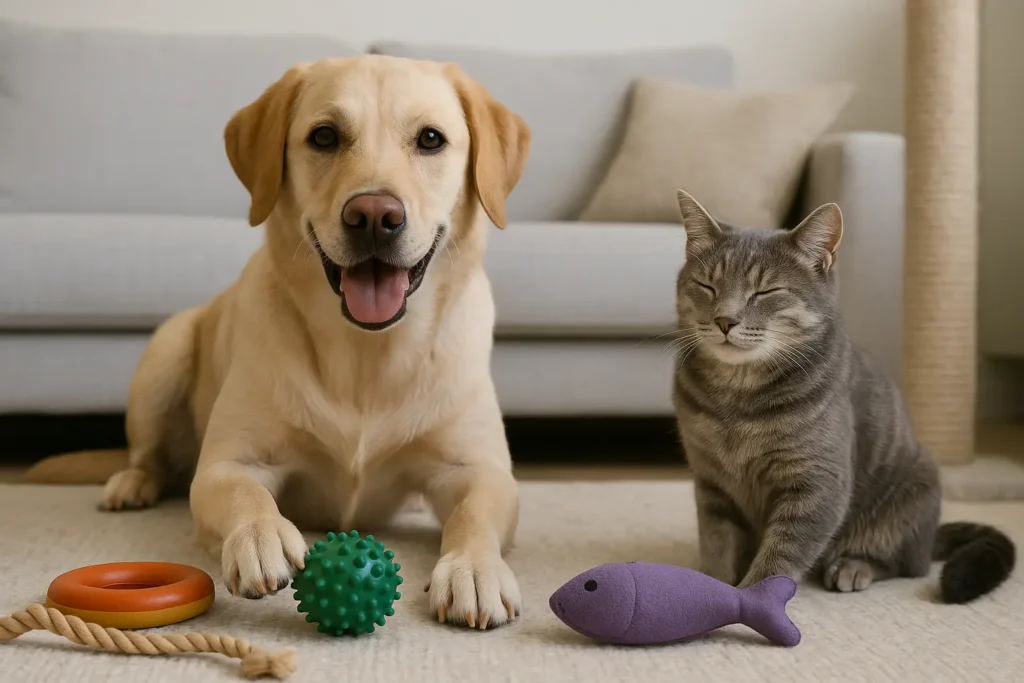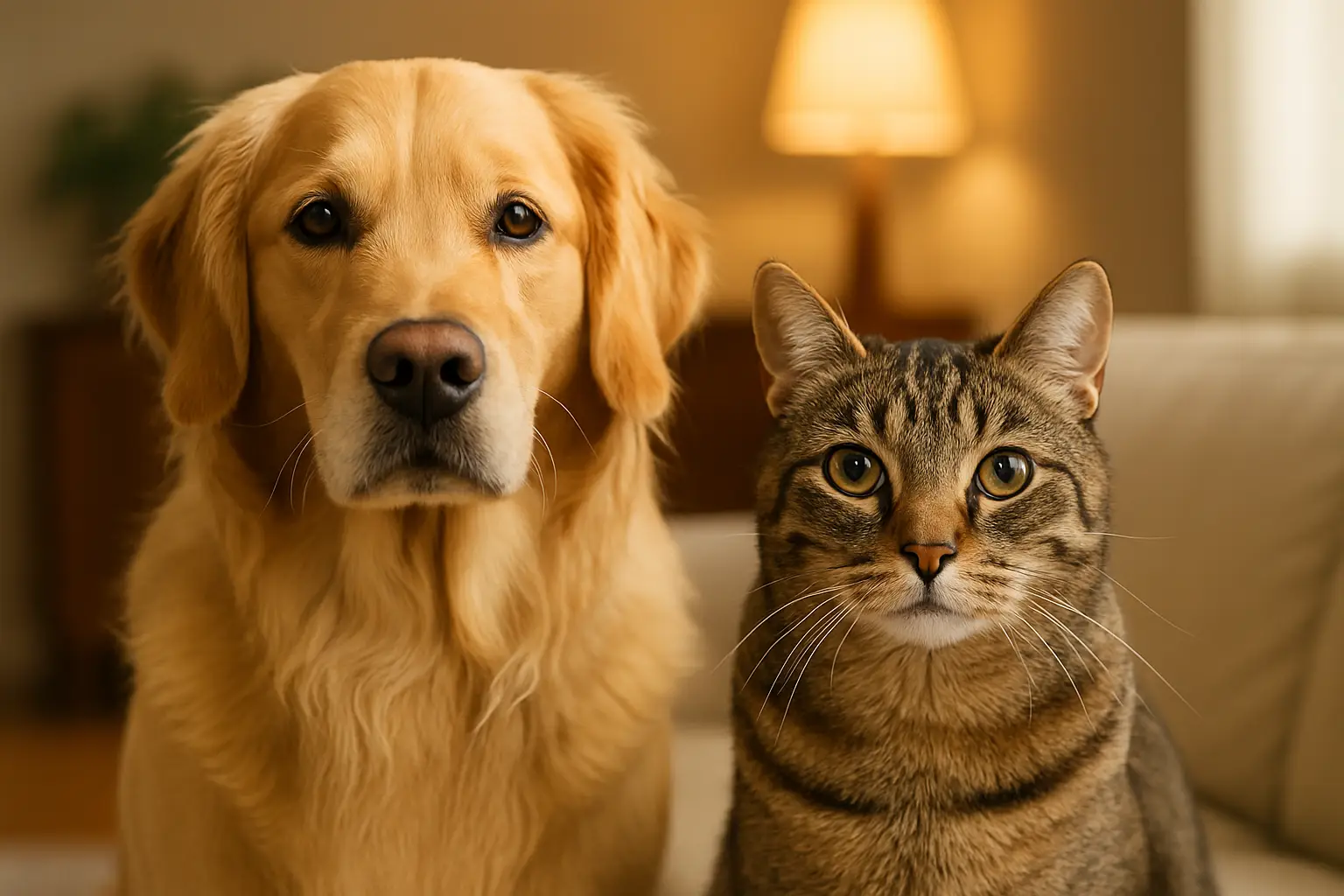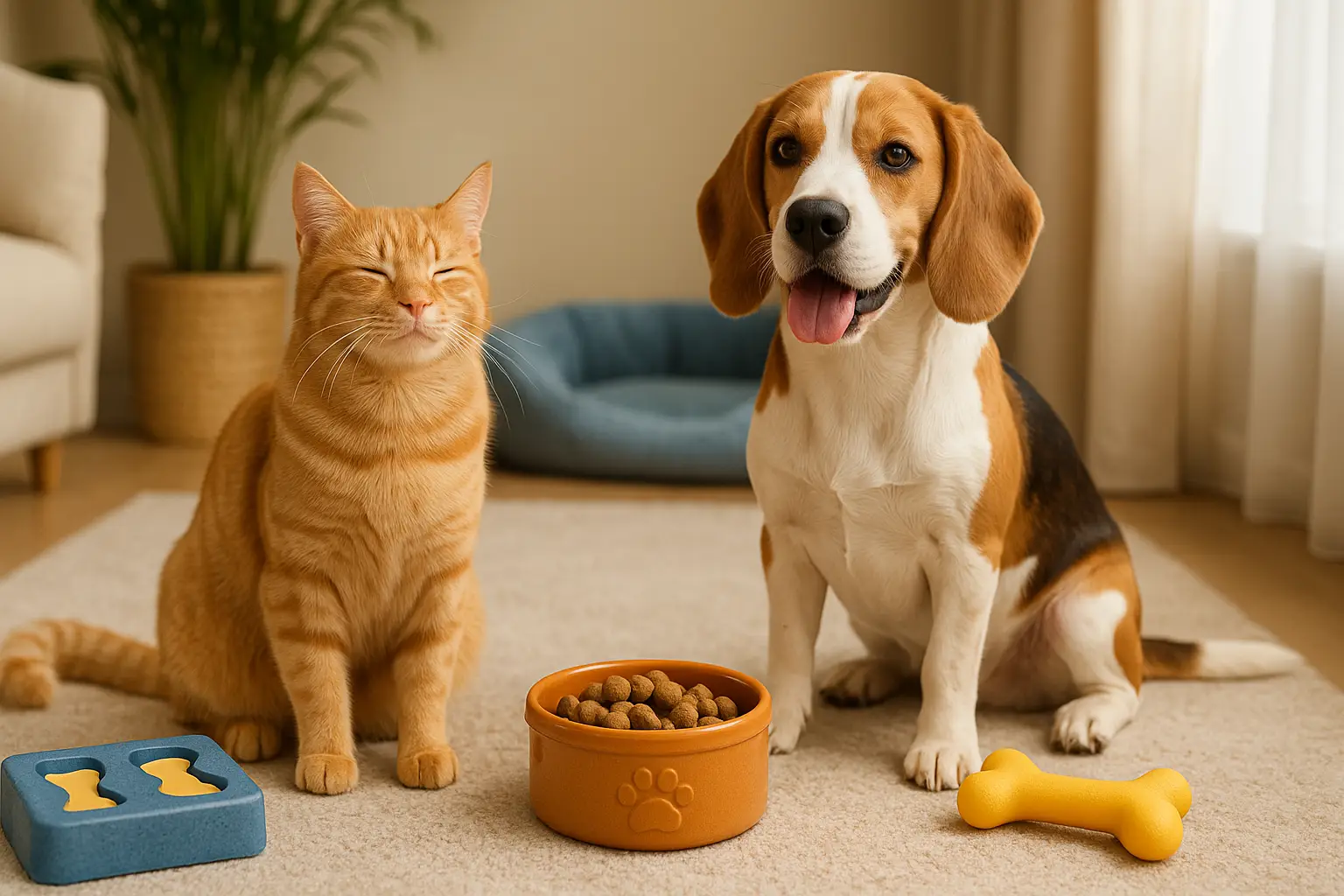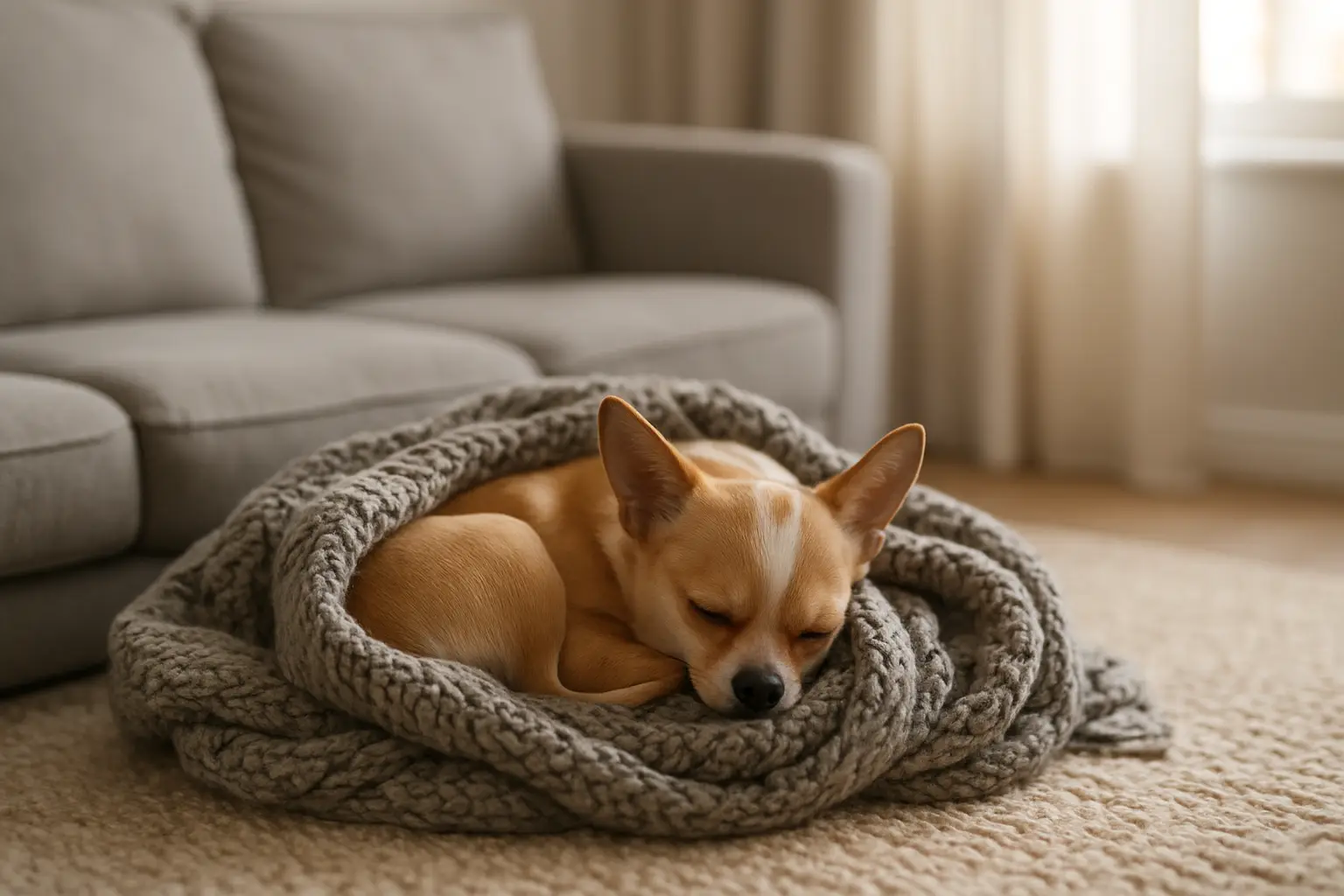How to Choose Safe and Engaging Toys for Your Dog or Cat
Toys are more than just playthings for pets—they’re essential tools that support your dog or cat’s emotional well-being, physical health, and mental stimulation. The right toy can relieve boredom, reduce anxiety, and even prevent destructive behaviors. But with aisles full of brightly colored options, knowing what’s safe and what’s actually beneficial for your pet can be overwhelming.
In this guide, we’ll explore how to select toys that are fun, enriching, and most importantly, safe for your furry companions. Whether you’re buying for a curious kitten, a gentle senior dog, or an energetic puppy, this article will help you make smart choices that improve your pet’s daily life.

Why Pet Toys Are So Important
Play is a basic need for dogs and cats. Toys help them engage with their environment in healthy, constructive ways. Here’s what good toys provide:
- Mental stimulation to challenge thinking and problem-solving
- Physical exercise to burn energy and stay fit
- Emotional comfort, especially for pets who spend time alone
- Bonding opportunities between pet and owner
- Instinctual satisfaction—chasing, chewing, pouncing, or stalking
Ignoring a pet’s need to play can lead to issues like:
- Chewing on furniture or shoes
- Scratching inappropriate areas
- Weight gain due to inactivity
- Anxiety and depression
The good news? Just a few well-chosen toys can make a huge difference.
General Safety Guidelines for Pet Toys
No matter your pet’s size, age, or species, all toys should follow a few core safety principles.
1. Avoid Small Parts That Can Be Swallowed
Toys with buttons, plastic eyes, strings, or glued-on pieces are a choking risk—especially for dogs. Avoid anything that could come loose with chewing.
2. Choose Materials Made for Pets
Stick to toys labeled as pet-safe. Avoid:
- PVC or plastic with BPA or phthalates
- Toxic dyes
- Rubber that smells strongly of chemicals
Natural rubber, food-grade silicone, tightly woven rope, and untreated cotton are safer alternatives.
3. Size Matters
Pick a toy that fits your pet’s size:
- Too small? It can be swallowed or lodged in the throat.
- Too big? It may be hard to grip or too intimidating for smaller pets.
Always check the label for breed or weight suggestions.
4. Inspect Toys Regularly
Even durable toys can wear out over time.
- Check for rips, broken pieces, or sharp edges.
- If stuffing or squeakers are exposed—retire the toy.
- Wash soft toys regularly to prevent bacteria buildup.
Choosing Toys for Dogs
Dogs play with a wide range of behaviors—chewing, shaking, tugging, retrieving, and problem-solving.
1. Chew Toys
Ideal for teething puppies or dogs who like to gnaw.
- Choose durable, non-toxic rubber (like KONG toys)
- Avoid bones that splinter (especially cooked bones)
- For light chewers, plush or rope toys can be appropriate
🟢 Best for: Teething, stress relief, keeping jaws strong
2. Tug Toys
Great for interactive play.
- Look for tightly braided rope or heavy-duty rubber handles
- Avoid toys that unravel easily or have loose threads
🟢 Best for: Bonding play, confidence-building, high-energy dogs
3. Puzzle and Treat-Dispensing Toys
Keep dogs mentally stimulated.
- Fill with dry kibble, peanut butter (xylitol-free), or small treats
- Increase difficulty over time to keep your dog engaged
🟢 Best for: Smart breeds, dogs left alone for longer periods
4. Fetch and Retrieval Toys
Balls, frisbees, and soft discs are fun for outdoor or indoor play.
- Opt for soft, non-abrasive materials (tennis balls can wear down teeth!)
- Glow-in-the-dark options are great for early mornings or evenings
🟢 Best for: Active dogs, outdoor play, bonding
5. Comfort Toys
Some dogs love carrying plush toys or sleeping with them.
- Make sure they’re made for pets—not repurposed from children’s toys
- Remove any parts that could be swallowed
🟢 Best for: Puppies, seniors, anxious or solo pets
Choosing Toys for Cats
Cats need toys that encourage stalking, pouncing, chasing, and batting—behaviors that mimic hunting.
1. Wand Toys
Interactive toys that simulate prey movement.
- Use feathers, strings, or small dangling objects on a stick
- Keep them out of reach when not in use to avoid chewing accidents
🟢 Best for: Active play, bonding, high-energy cats
2. Catnip Toys
These soft toys are infused with catnip to stimulate activity.
- Not all cats react to catnip—it’s genetic
- Use occasionally to keep the effect fresh
🟢 Best for: Solo play, stress relief, older cats who need stimulation
3. Puzzle Feeders
Encourage foraging and slow eating.
- Some roll on the floor while dispensing kibble
- Others involve flaps, levers, or compartments to open
🟢 Best for: Indoor cats, fast eaters, highly curious personalities
4. Chase and Track Toys
Balls inside circular tracks that cats can bat endlessly.
- These stimulate natural hunting instincts
- Some include motion sensors or lights for extra excitement
🟢 Best for: Solo play, small living spaces
5. Scratch Toys and Boards
Prevent your furniture from becoming the victim.
- Provide vertical and horizontal options
- Cardboard, sisal, and carpet-covered surfaces are ideal
🟢 Best for: Natural nail maintenance, territory marking, energy release
DIY Toy Ideas (Budget-Friendly and Safe)
You don’t need a pet store to offer enrichment. Try these simple at-home ideas:
For Dogs:
- Frozen carrot sticks for chewing
- Tennis ball with a slit to hide treats
- Tied-up old t-shirts into tug toys
For Cats:
- Cardboard box castles
- Toilet paper rolls with kibble inside
- Paper bags or crumpled paper balls
Always supervise play, especially with homemade toys, to ensure safety.
Rotating Toys to Keep Play Fresh
Even the best toy becomes boring if it’s always available. Try this routine:
- Keep 2–3 toys out at a time
- Rotate them every few days
- Hide a few favorites and “reintroduce” them later for extra excitement
Rotating toys prevents overstimulation and adds novelty without spending more.
Storage and Organization Tips
A tidy toy system keeps your home cleaner and your pet more engaged.
- Use a low basket or bin your pet can access freely
- Keep chew toys, plushies, and puzzles in separate areas
- Wash soft toys weekly, and wipe down hard toys with a pet-safe cleaner
What to Avoid in Pet Toys
❌ Squeakers that can be removed
Swallowed squeakers can cause choking or blockages.
❌ Rawhide (in some cases)
Hard to digest and often treated with chemicals.
❌ Children’s toys
Not built to withstand pet use and often contain unsafe materials.
❌ Rope toys for aggressive chewers
Once unraveled, the strings can cause internal damage if ingested.
Final Thoughts: The Right Toy Brings Joy
Finding the right toy for your pet isn’t about buying the biggest or most expensive option. It’s about observing how your pet plays, choosing safe materials, and rotating choices to keep things exciting.
When you offer your dog or cat toys that match their instincts, energy level, and temperament, you give them something incredibly valuable: a daily outlet for fun, growth, and satisfaction.
So, whether you’re tossing a squeaky ball in the park or watching your cat stalk a feather wand, remember that play is love in motion. Safe, engaging toys help your pet feel understood—and that’s a gift worth giving every single day.




Post Comment